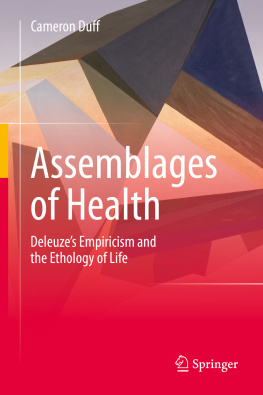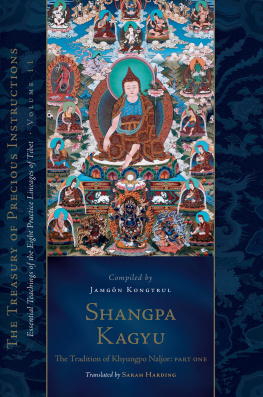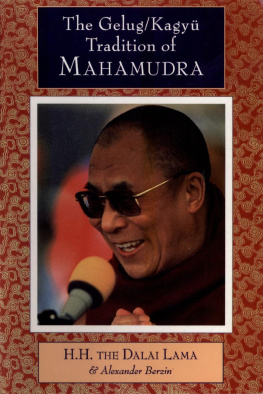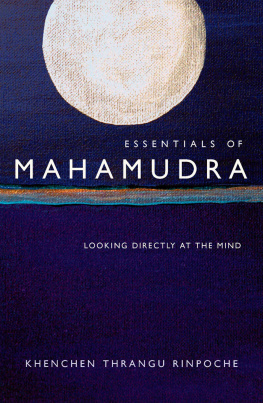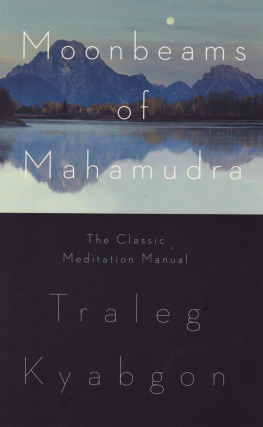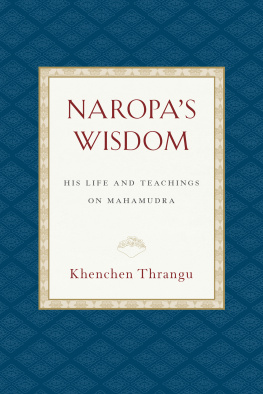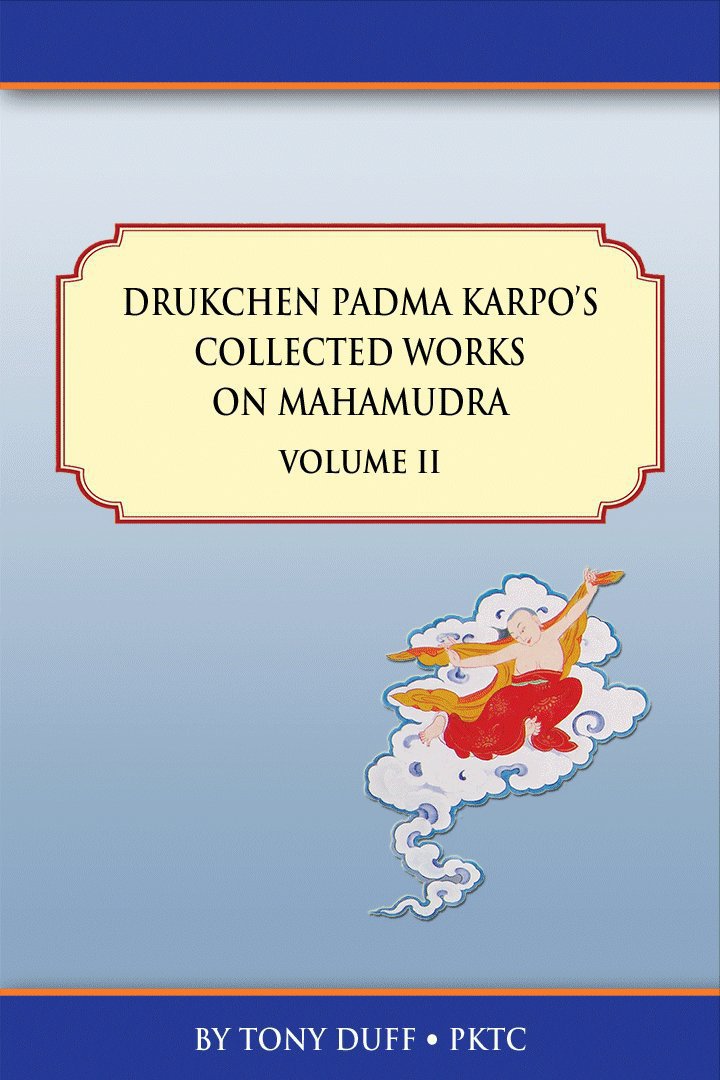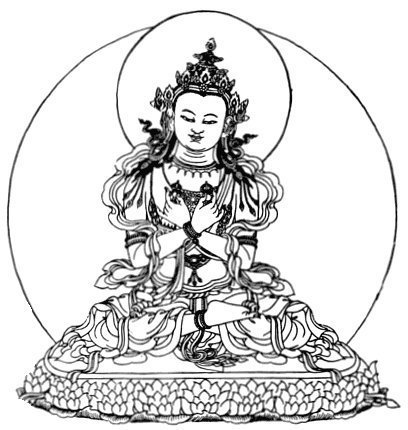Copyright 2011 Tony Duff. All rights reserved. No portion of this book may be reproduced in any form or by any means, electronic or mechanical, including photography, recording, or by any information storage or retrieval system or technologies now known or later developed, without permission in writing from the publisher.
First edition, November, 2011
ISBN paper book: 978-9973-572-01-9
ISBN e-book: 978-9973-572-00-2
Thangka images of Phagmo Drupa Shelly and Donald Rubin Museum, Himalayan Art Project, with permission.
Produced, Printed, and Published by
Padma Karpo Translation Committee
P.O. Box 4957
Kathmandu
NEPAL
Committee members for this book: translation and composition, Lama Tony Duff; editorial, Tom Anderson; book production, Christopher Duff.
Web-site and e-mail contact through:
http://www.pktc.org/pktc
or search Padma Karpo Translation Committee on the web.
Preface
Dear Readers,
We are actively engaged in producing Kindle versions of all of our titles. We would like to contact you about new Kindle books and other similar productions, but Amazon does not allow a way for us to communicate with you as a purchaser of our Kindle books. Therefore we encourage you to register with us by to see the full range of our publications.
This book was originally published as a single book on paper. For the needs of Kindle book production it was necessary to split that one book into two volumes. However, except for the split into two volumes, there is no difference in the content of the paper and Kindle editions. The book comes with an extensive introduction and main content consisting of seven major texts. Kindle edition volume one contains the introduction and three smaller texts all of which form a basis for the remaining four texts. Volume two contains the remaining four texts, all of which are very practical teachings on Mahamudra. In this way, volume one is essential reading and volume two follows on from and completes that volume. Thus, both volumes one and two are equally important to read when gaining a full understanding of Mahamudra as presented by Padma Karpo.
Please do not purchase our Kindle books, read them, then return them for a refund! The translations in the books take a long time to make and the books are not easy to produce. If you read and return for a refund to suit yourself, you create great difficulties for us which adversely affects our ability to come out with more books. We thank you for your consideration on this point.
Introduction
Mahamudra is a name both for reality and for the teachings that lead beings back to reality. The Mahamudra teaching first emerged in ancient India; a short history of which appears later in the introduction. The teaching was later brought into Tibet in the eleventh century C.E. through the efforts of a number of individuals. Marpa the Translator was one of those individuals and the Tibetan tradition that developed through him, called the Kagyu tradition, is one of the four main religious traditions of Tibet. The Kagyu tradition developed many branch lines of transmission, one of which became known as the Drukpa Kagyu. This book is concerned with the Kagyu traditions teaching of Mahamudra in general and with the Drukpa Kagyu lineages teaching of Mahamudra in particular.
Drukchen or Great Drukpa is the title given to the heads of the Drukpa Kagyu lineage. The fourth Drukchen, Padma Karpo, is the author of the texts contained in this book. He was, like all of the Drukchens, a highly accomplished master of meditation and a man of extraordinary learning, but was also an author of extraordinary ability. His combined qualities of realization, knowledge, and ability as an author led to him becoming renowned as one of the greatest authors in Tibetan Buddhist history. Padma Karpos writings are so good that they are used not only in the Drukpa Kagyu tradition but throughout the Kagyu tradition and are even read by followers of the other Tibetan Buddhist traditions, something that has happened only with a few, very great authors within Tibetan history. Following his death, Padma Karpos writings were collected and assembled into his Collected Works . This book presents the complete set of writings on Mahamudra contained in his Collected Works .
The work here is important for several reasons. Firstly, it presents some of the literature of the Drukpa Kagyu, little of which has been presented in English to date. Secondly, it presents, for the first time, Padma Karpos works on Mahamudra in English and does so with a consistency of translation throughout that makes possible an in-depth study of the texts as a set. Thirdly, the Drukpa Kagyu has its own way of presenting the Mahamudra teaching of the Kagyu, a presentation which is shown clearly in the texts included here.
1. The Source of the Teaching
Generally speaking, the Kagyu lineage traces itself back to the primordial buddha, Vajradhara, the sabhogakya above all sabhogakyas. In very ancient times, Vajradhara taught the teachings of tantra to humans on the island of Sri Lanka after which it was transmitted from one person to an other during a long period in ancient India. Eventually, several streams of transmission came together in the Indian siddha named Tillipa [9881069]. He passed them to his main disciple Nropa, who in turn passed them to the Tibetan man, Marpa the Translator. Marpa then took them to Tibet. This line of transmission was known in the time of Tillipa and Nropa as the lineage of the command. That name in Tibetan language is Kagyu so, when this particular transmission of Mahamudra teachings went into Tibet, it became known as the Kagyu.
A clear summation of the Indian transmission of the Mahamudra teachings from Vajradhara through to Nropa was given by the second Drukchen, Mipham Gyalway Wangpo, at the beginning of his Catalogue Called Flowers of Words :
The personage of the four kyas and five wisdoms, great Vajradhara, blessed the Keeper of the Secret, Vajrapi, and proclaimed him to be holder of the Store of the Secret of all phenomena, who instructed chrya Thanglopa, who instructed Shinglopa, who instructed the great chrya Kararipa, who instructed Tillipa, which is the mother lineage of the transmission of the command. And the Keeper of the Secret instructed ombhi Heruka who instructed the barmaid Vinsa, who instructed king Drikapa and his son chrya Lavapa, who instructed king Indrabhti, who instructed Tillipa, which is the luminosity transmission of the command.
In that way, the chrya Tillipa received four transmissions of the teaching and was blessed by the gurus of the four transmissions and fully realized their instructions. In addition, he met face to face with great Vajradhara and requested dharma from him. Tillipa said of this,



